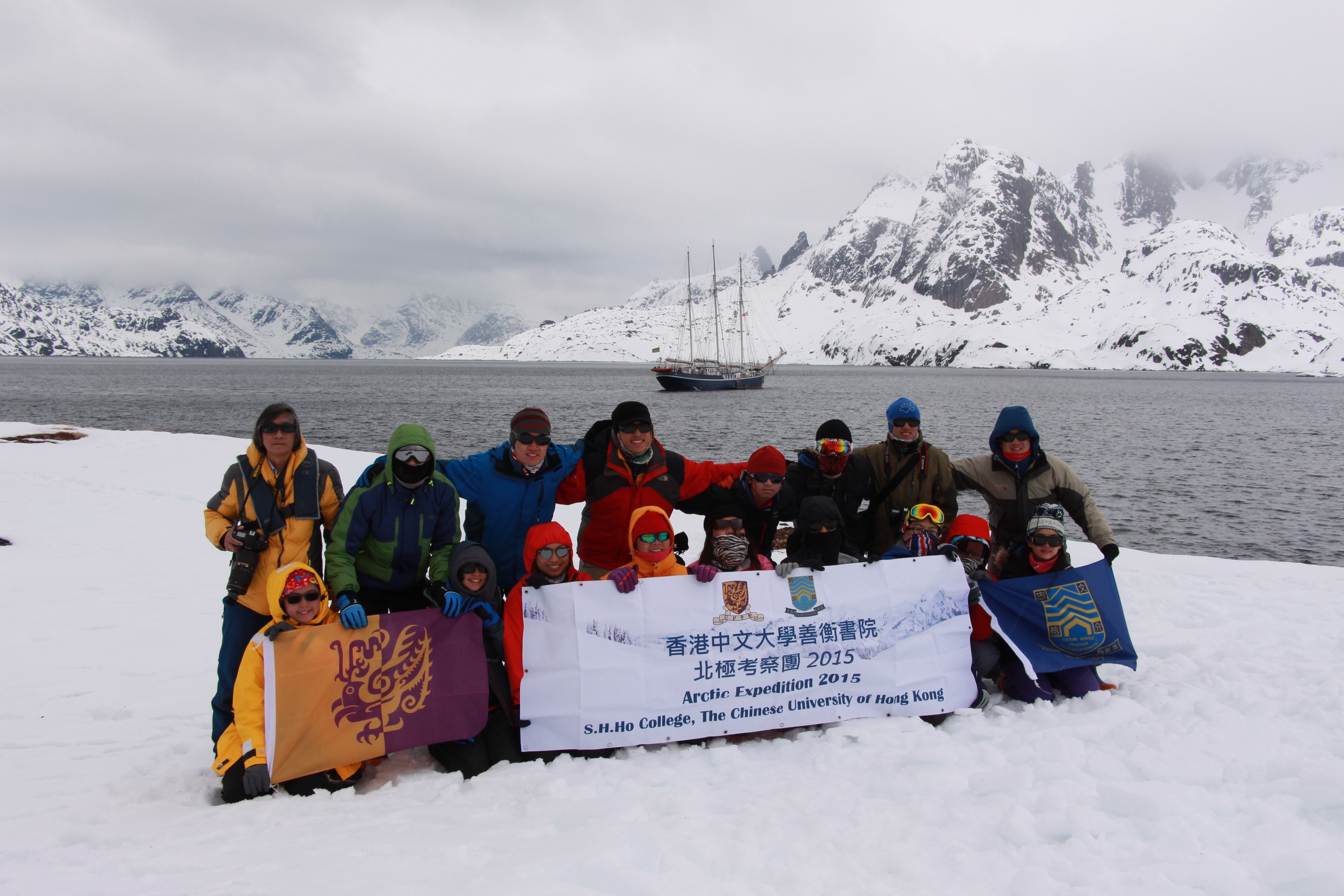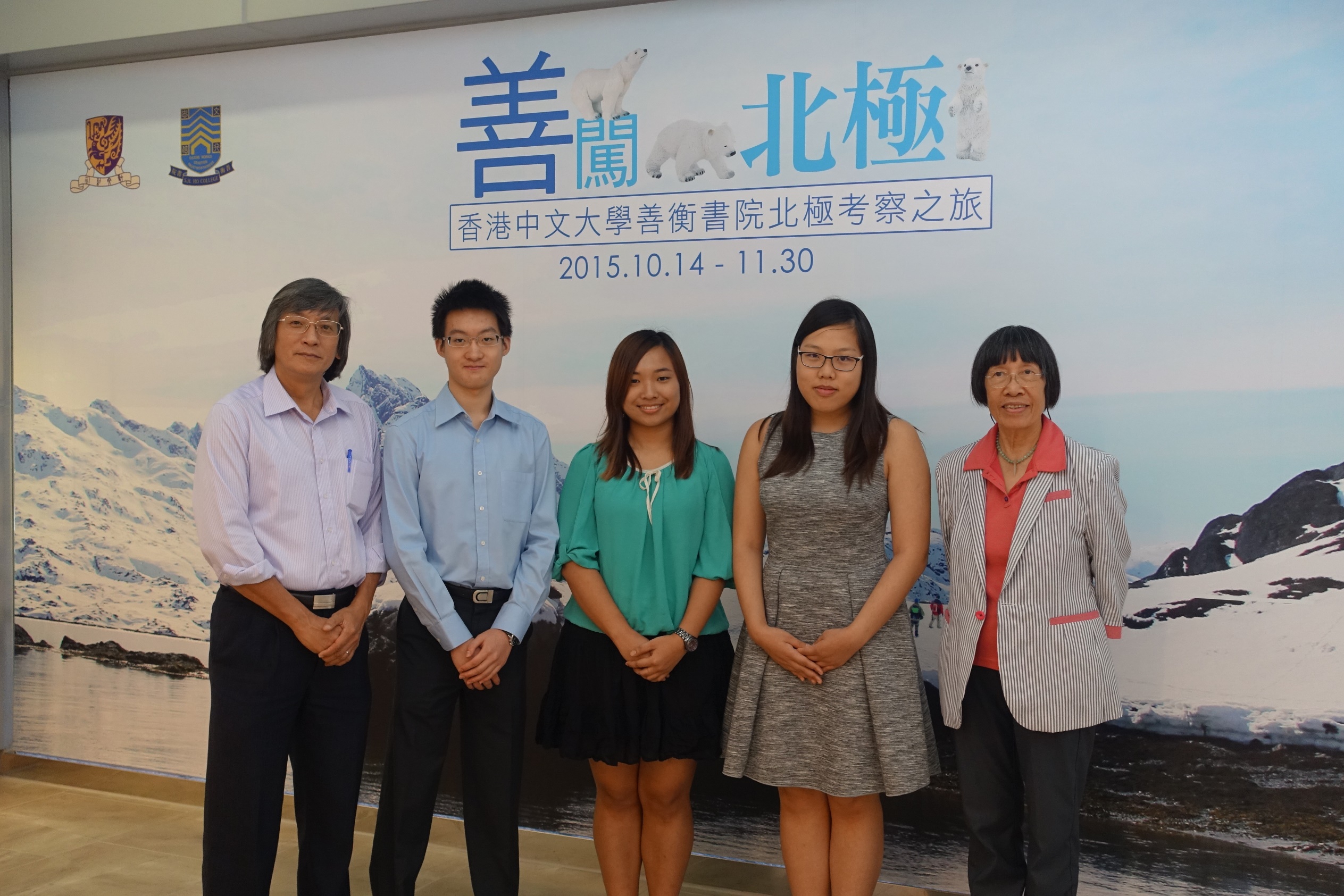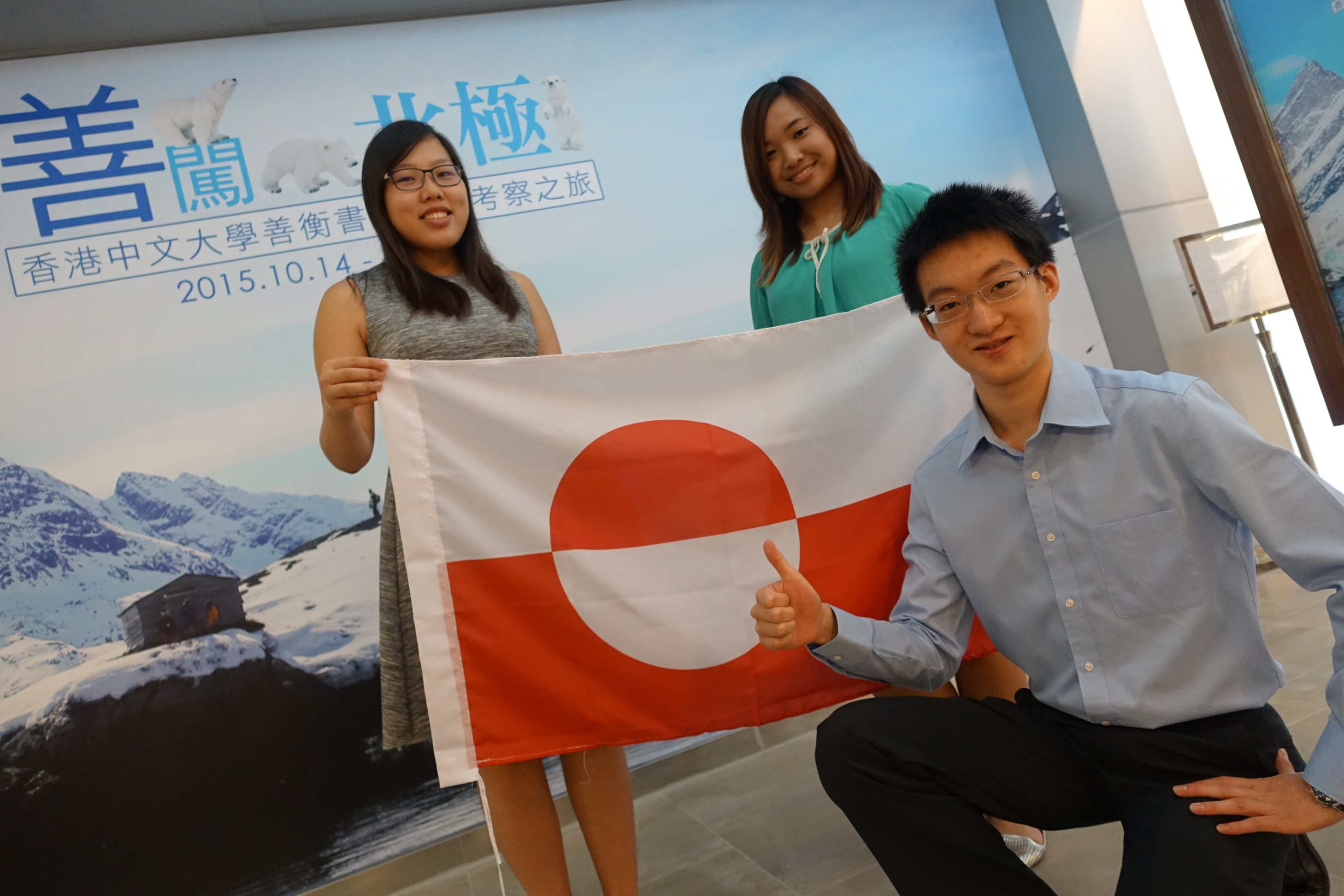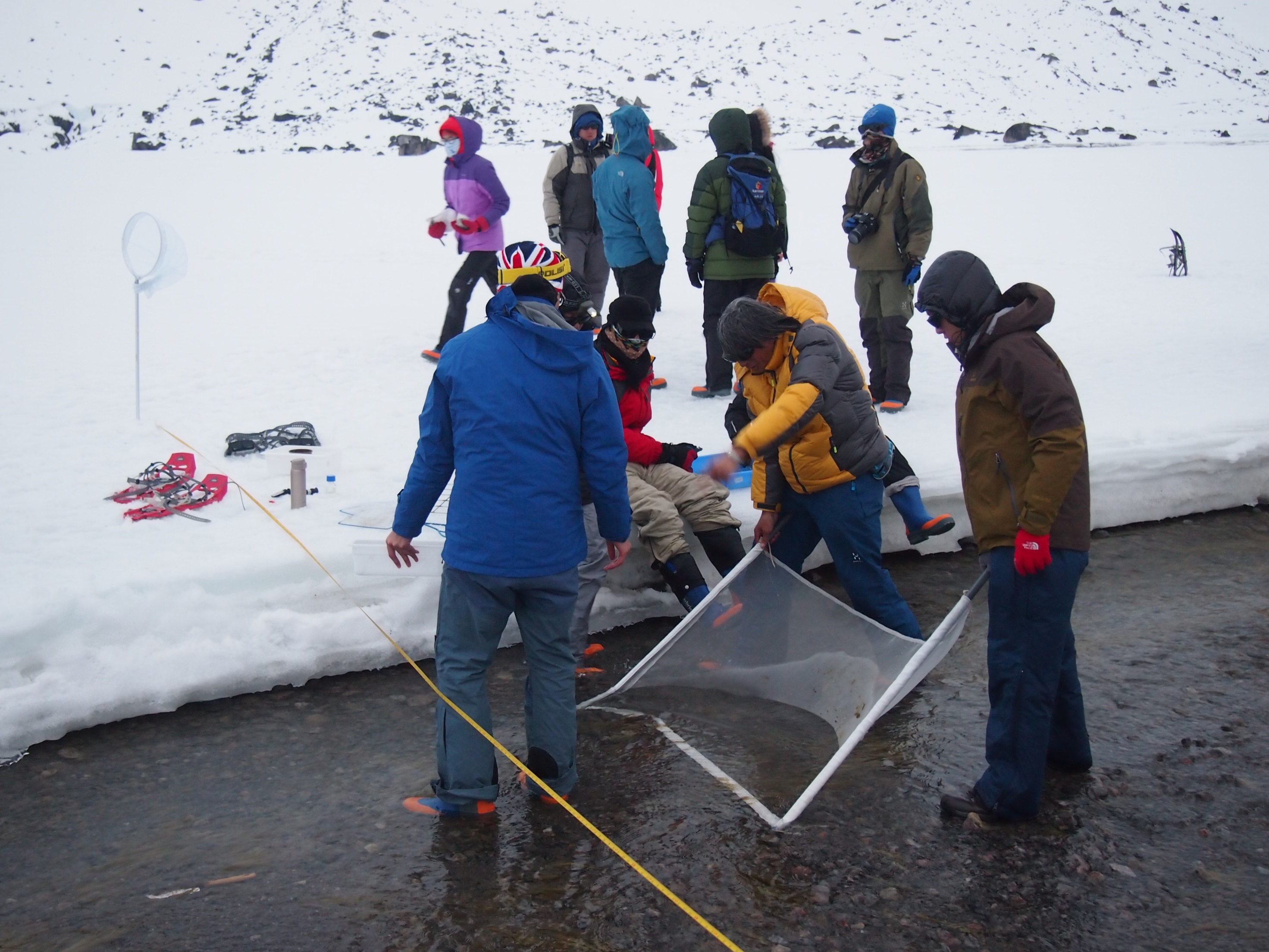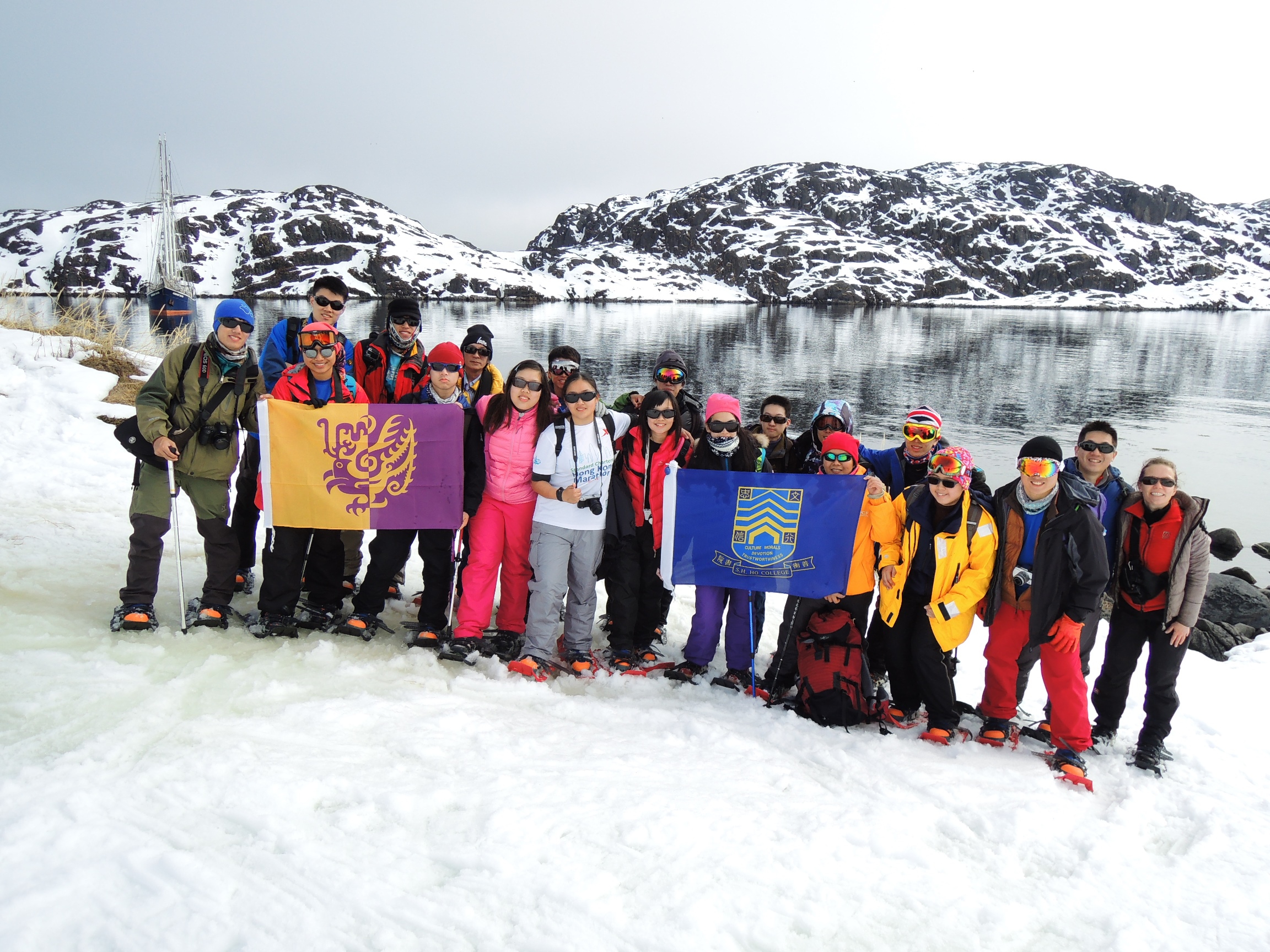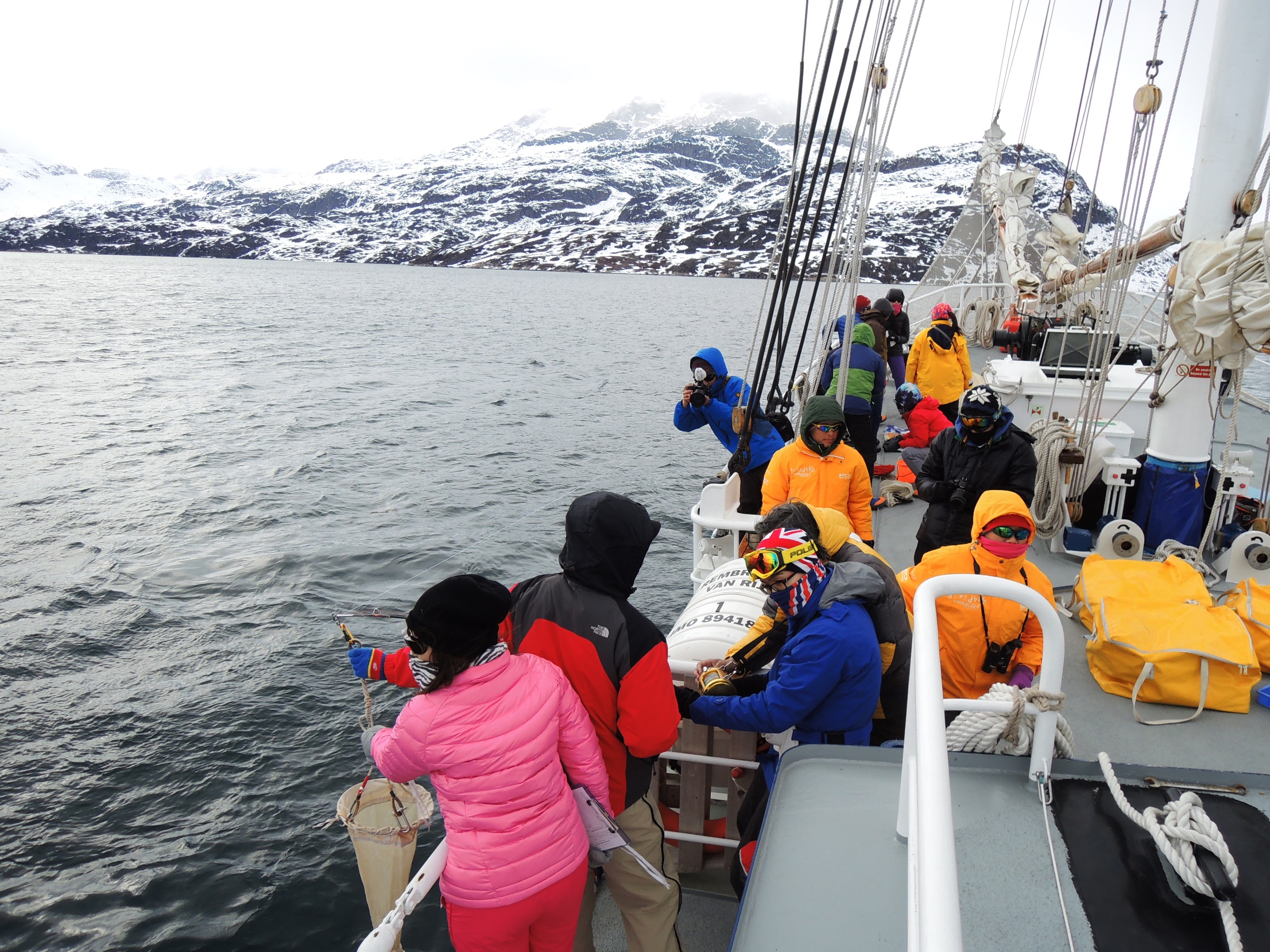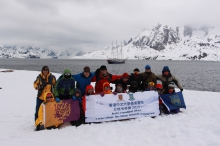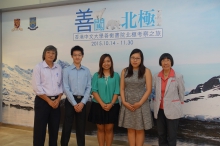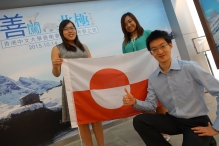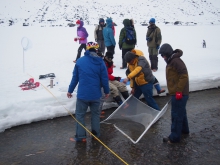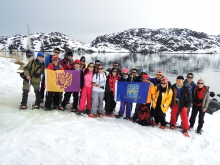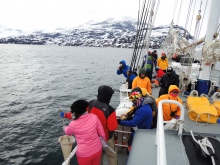CUHK
News Centre
CUHK Undergraduate Students Explore the ArcticPotential Unleased in Extreme Conditions
Sixteen undergraduate students from S.H. Ho College of The Chinese University of Hong Kong (CUHK) embarked on a 12-day journey on the exploration vessel Rembrandt Van Rijn in May. They were the first team of undergraduate Arctic explorers sent by CUHK. With Dr. Rebecca Lee as the Consultant and Dr. KC Chung the Science Officer, students from various faculties conducted 10 researches on topics including ecology, climate, geography and Inuit cultures on the west coast of Greenland. S.H. Ho College initiated this expedition programme to unleash the young explorers’ potentials and build their life experiences in such an extreme environment.
‘Innovation is a pillar for the betterment of society nowadays. S.H. Ho College has been nurturing its students to delve into the unknown and realize their innovative ideas. “A journey of a thousand miles begins with a single step.” The young Arctic explorers from various disciplines have begun their journey to broaden their horizons and to inspire the local communities with their reflections. I’m pleased to witness their growth as their Master,’ remarked Prof. Samuel Sun, Master of S.H. Ho College.
Dr. KC Chung, Science Officer of the Arctic Expedition Tour, led the team members to investigate the rocky shore, tundra, ocean and fresh water in the Arctic. As part of mastering the use of scientific research appliances and conducting 8 site visits and experiments in a short period, they shivered in the freezing cold, walking in the snow for 6 hours a day to and from the exploration sites. This was a test of physical toughness and will power. The exploration vessel was constrained by unstable factors like weather, water current and wind direction. The explorers could only provisionally determine the location of a site visit the next day based on their understanding of the situation after internal discussion of the investigation findings conducted the night before. Despite all the hardships, jet-lag, fatigue and technical difficulties the explorers encountered during the trip, they were able to persist through the chilling, unforgiving Arctic winds, snowstorms and blizzards. The driving force behind this was their passion——to vividly display the data collected in those freezing conditions to the Arctic Exhibition visitors in Hong Kong.
Greenland, with 80% of its land surface covered by an ice-cap 4km thick in places, is the world’s largest island. The average temperature in Greenland is below 0 °C. Most local Eskimo people (the Inuit) survive mainly by hunting and fishing, and are struggling as fish stocks become depleted by climate change. In their voyage in early summer, the expedition team was astonished by the ice shelf collapse of the Sermitsiaq Glacier and fascinated to see a curious humpback whale swimming past their vessel. In August, the European Space Agency discovered that Greenland’s Jakobshavn Glacier lost a chunk of ice with total area of 12.4km2 (equivalent to the size of Lamma Island), reflecting how global warming is accelerating glacier retreat in the Arctic.
Formerly a province of Denmark, Greenland gained the status of an autonomous Danish dependent territory with partial self-government in a 2008 referendum. Regina Tse is a legal student who interviewed the locals about their views on the issue of the independence of Greenland. Greenland accepts €3.8 billion from Denmark unconditionally, every year and most Greenlanders rely heavily on the governmental subsidy for living. Although Greenlanders show positive attitudes to achieving full autonomy from Denmark, they have not reached a consensus on the pace and scale of independence. A number of interviewees expressed their willingness to compromise with the political reality in order to maintain their national income and living standard.
Dominic Mak and Jonathan Leung, medical students, did a comparative study on the physiological responses to acute cold among subjects from the Rembrandt Van Rijn’s Hong Kong travellers, the vessel’s crew in the Arctic and the local Inuit, who possess different physiological characteristics. They discovered that the Hong Kong travellers had remarkably higher average increments in blood pressure values compared to the vessel’s crew. This shed light on the way the Greenlandic Inuit react to acute cold weather by various physiological adaptions. Jonathan climbed in the Himalayas in 2012 and witnessed the impact of climate change. He wished to take part in community education by sharing his Arctic journey and the significance of environmental protection.
With an aim to visually expose CUHK members and the public to the snowy landscape in the Arctic, an exhibition displaying the appliances, equipment and findings used in the Arctic Expedition is being held from 14 October to 30 November at S.H. Ho College. They have even produced a documentary which recorded their rugged journey and experiences. Please click here to view it online: https://youtu.be/JTnobPokGGA .
(from left) Dr CHUNG, Kwok Cheong, Lecturer of School of Life Sciences and Science Officer of the Arctic Expedition Team; Johnathan Leung, Year 4 Medical student; Zoey Cheung, Year 4 Chinese Language and Literature student; Regina Tse, Year 4 Law student; Dr Rebecca LEE, Founder, Polar Museum Foundation and Principal Consultant of the Arctic Expedition Team.
Students from various disciplines conduct ten research projects on topics including ecology, climate, geography and Inuit culture on the west coast of Greenland.
Students from various disciplines conduct ten research projects on topics including ecology, climate, geography and Inuit culture on the west coast of Greenland.


